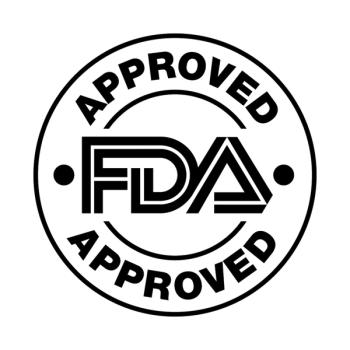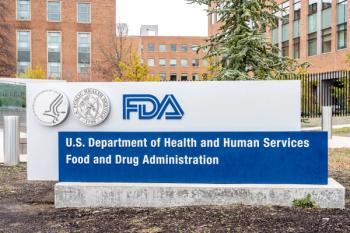
Gilead’s Entry Inhibitor for Chronic Hepatitis Delta Demonstrates Durable Virologic Suppression Post-Treatment
Results from the Phase III MYR301 trial show that 36% of patients who achieved undetectable hepatitis delta virus levels when treated with bulevirtide maintained suppression for nearly two years.
Final results from the Phase III MYR301 trial show that extended treatment with bulevirtide—Gilead’s entry inhibitor for chronic hepatitis delta virus (HDV)—may lead to durable virologic suppression even after treatment discontinuation. First presented at the European Association for the Study of the Liver (EASL) Congress 2025, the findings build on earlier data presented at The Liver Meeting 2024.1
“HDV is the most severe form of viral hepatitis with more rapid progression towards liver cancer and liver-related death,” said Heiner Wedemeyer, head and chair, department of gastroenterology, hepatology, infectious diseases and endocrinology, Hannover Medical School, in a press release. “Previous data have demonstrated the potential of bulevirtide as a safe and effective treatment option and, as EASL and the European Medicines Agency guidelines recommend, continued treatment is encouraged as long as people are experiencing a clinical benefit. With today’s results, we’re now seeing the potential of bulevirtide to maintain virologic suppression and normalize markers of liver inflammation for a subset of people living with HDV, demonstrating a durable response, even after treatment cessation.”
The multicenter, open-label, randomized MYR301 trial evaluated the long-term efficacy and safety of bulevirtide. Investigators randomly assigned 150 patients to receive 2 mg of bulevirtide once daily, 10 mg of bulevirtide once daily, or no antiviral treatment. Efficacy and safety data were assessed at week 48.
At that time, patients in the no antiviral treatment group began receiving 10 mg of bulevirtide through week 96. The study’s primary endpoint was a combined response, defined as undetectable HDV RNA or a ≥2log10 IU/ml decline from baseline and alanine transaminase (ALT) normalization by week 48. Secondary endpoints included undetectable HDV RNA, ALT normalization, and change from baseline in liver stiffness as measured by transient elastography.1,2
Results showed that 36% of adults who achieved undetectable HDV RNA at end of treatment-maintained suppression for nearly two years off-treatment. Additionally, patients with longer durations of on-treatment undetectability—particularly those treated for ≥96 weeks—were more likely to sustain virologic control, with 90% remaining undetectable.
During the second follow-up year, no relapses occurred in participants who had been undetectable one year after stopping treatment. Post-treatment hepatic serious adverse events occurred in 14% of patients but resolved in 85% of these cases.1
According to the World Health Organization, HDV affects nearly 5% of people living with chronic hepatitis B virus, with a global prevalence of approximately 12 million. Countries with high prevalence rates include Mongolia, the Republic of Moldova, and several in western and central Africa.3
“At Gilead, we are committed to advancing research and exploring the full potential of bulevirtide as a monotherapy, in combination, and at different doses, to help improve outcomes for people living with chronic HDV,” said Anu Osinusi, VP, clinical research for hepatitis, respiratory and emerging viruses, Gilead, in the press release. “Previous results from MYR301 demonstrated the potential benefits of long-term treatment with bulevirtide. With this new data, we now have valuable insight into the durability of the response even after treatment has ended.”
Bulevirtide 2 mg is currently approved for adults with chronic HDV and compensated liver disease in the European Economic Area, Switzerland, Australia, and the United Kingdom. It is not yet approved in the United States, and the 10 mg dose has not been authorized by any regulatory body.1
References
1. Final Data From the Phase 3 MYR301 Study Demonstrated Longer Treatment With Bulevirtide Was Associated With Sustaining Undetectability After Stopping Treatment. Gilead. May 7, 2025. Accessed May 7, 2025. https://www.gilead.com/news/news-details/2025/final-data-from-the-phase-3-myr301-study-demonstrated-longer-treatment-with-bulevirtide-was-associated-with-sustaining-undetectability-after-stopping-treatment
2. Study to Assess Efficacy and Safety of Bulevirtide in Participants With Chronic Hepatitis Delta (CHD). Clinicaltrials.gov. Accessed May 7, 2025. https://clinicaltrials.gov/study/NCT03852719
3. Hepatitis D. WHO. Accessed May 7, 2025. https://www.who.int/news-room/fact-sheets/detail/hepatitis-d
Newsletter
Lead with insight with the Pharmaceutical Executive newsletter, featuring strategic analysis, leadership trends, and market intelligence for biopharma decision-makers.





